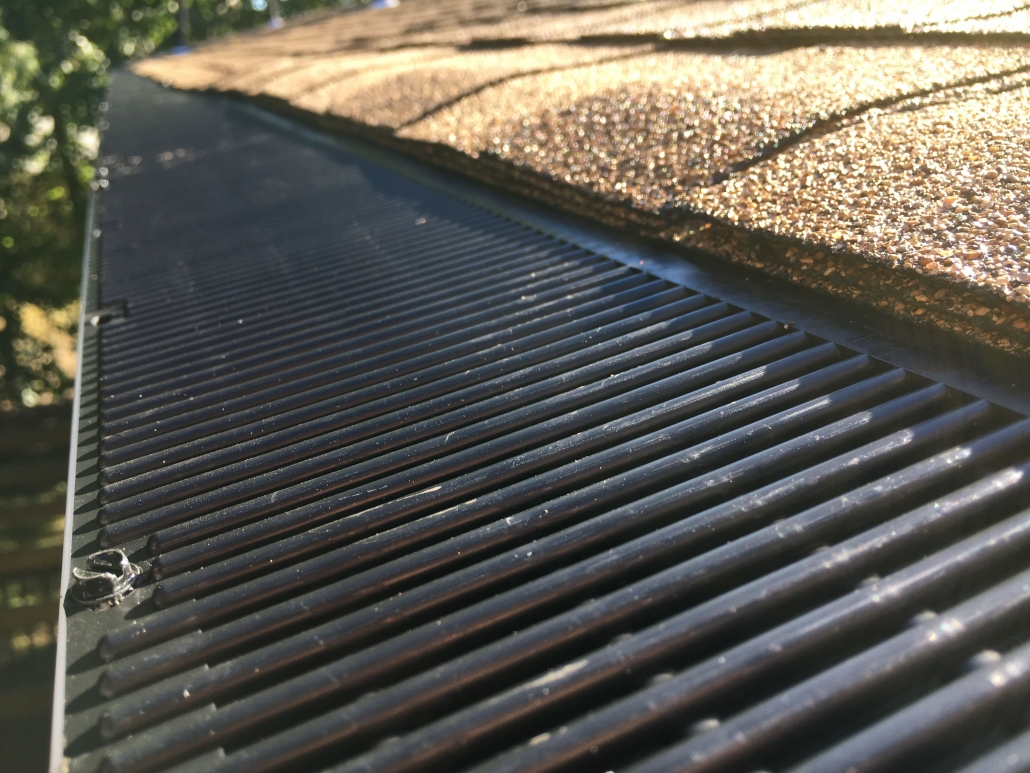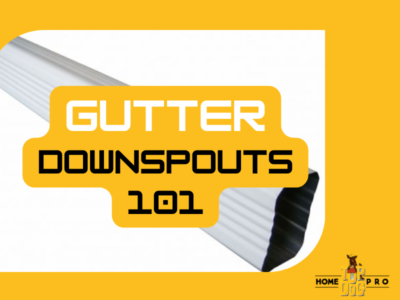When you search for “Gutter Downspouts,” you will most likely find numerous vendors and hardware stores offering downspout systems.
That is super useful for contractors and gutter companies but not as useful for the everyday homeowner who is trying to understand the functionality of their home’s exterior – in particular, the gutters.
Of course, there are many things we may see daily around our house that we don’t know too much about. We more than likely can point out where the gutters are on our home and identify weeds in the garden, but do you know why your gutter downspouts are so vital?
Today, we will give you a rundown on the ins and outs of your home’s gutter downspouts.
What is a gutter downspout?
A downspout is a drainage chute from your gutters that help gutters get rid of excess water that may accumulate due to rain. The water is drained from top to bottom in the direction away from the house.
Depending on the size and type of your gutters, downspouts, in terms of their width, generally come in one of many sizes:
- 3 inches,
- 4 inches,
- 5 inches, or
- 6 inches.
The most common are aluminum downspouts that run at 2″x3″ and 3″x4″ in size or 3 or 4 inches in diameter if they are round. You’ll find that most households have 3×4 inch rectangular downspouts. The following are determinants of the dimensions of your downspout:
- Location of house
- Size of house
- Functionality of Downspout
Downspouts also vary in the material that they are made out of, for example, aluminum and vinyl gutters.
Purpose of downspouts:
Downspouts divert water away from your home that is collected by your roof and gutters. They are vital for protecting your home’s foundation an also the landscaping around it. Without downspouts, you can see erosion to your soil, hard surfaces, and even your driveway!
This is why we have recommendations for downspout solutions if you have issues with your current downspouts, like rain barrels, splash blocks, or drains. You can actually utilize a downspout diverter, for example, to help water your landscaping or control where water is disbursed in your yard.
Another solution for drainage is to use a flexible downspout extension that will displace water anywhere you utilize the extension.
Types of Downspouts:
Now that you know what a downspout system includes, here are the types of downspouts you can purchase for your home:
Rectangular Downspouts (Most Common)

If you have aluminum gutters, typically, you will have rectangular downspouts. Aluminum, K-style gutters are the most commonly used gutter materials for homes, and they come in 5-inch and 6-inch sizes. The most common downspout size for rectangular downspouts is 2X3 inches for 5-inch gutters and 3×4 inches for 6-inch gutters. You don’t need gutter guards for your downspouts, so if you are also purchasing gutter covers, you only need to price them for the actual gutter troughs.
Round Downspouts (Less Common)

More commonly associated with metal, copper, and steel gutters – round downspouts are circular like a pipe and often come in three and four-inch varieties. Downspout sizes and styles depending on the material and size of gutters you decide to install on your home. According to Gutter Supply, round downspouts can be more durable. Round Corrugated, also called Fluted Downspouts, have corrugations/flutes that provide extra strength and conceal dents over time.
Downspouts vs. Rain Chains

Some people might like to add a little curb appeal and aesthetics to their homes, and one way to do this is with a rain chain instead of using a standard downspout. When properly installed, a rain chain can help with water flow while simultaneously adding some beauty.
Tiny links or cups make a rain chain – hence the name – and they will often extend from the edge of your gutters down to the ground. They are pretty but not as effective as a traditional downspout.
Do you have downspout maintenance issues?
Issues with your downspouts come back full circle to the quality of your gutter guards. Gutter guards that lack quality preventative material against the elements can cause bothersome blockages in your downspout!
Such jams commonly consist of sticks, leaves, and other organic matter. Blockages primarily formed throughout winter (e.g., ice, etc.) can be especially damaging!
If you are not careful, here is a list of things that can come about as a result!
- Progressive Erosion or detachment
- Pest Infestation
- Leaks
Problems usually come up naturally, but if you don’t take care of your rain gutter system with regular maintenance and gutter cleaning, you can run into more issues.
Solutions for gutter system issues:

Gutter Guards
The first solution for clogged downspouts is prevention – gutter guards. Self-cleaning Raindrop gutter guards will prevent any downspout issues.
In March of 2021, we had a customer call about a possible downspout clog. Unfortunately, it was a bird that had been trapped trying to nest! Birds commonly clog gutters and downspouts, making gutter guards well worth it!
☑️ Read our Gutter Guard Ranking article here!
Clean your gutters
Next, cleaning gutter downspouts is generally very straightforward, even to the most beginner DIY type of people. However, there can be parts that require more thought and preparation!
Generally, you can use an extension ladder to see if there is anything obstructing the opening of the downspouts and remove it to be in the clear (via removable wire mesh if present). However, you want to keep in mind that being on a ladder is a safety risk, and it is up to your full discretion to do so.
Another way is running water from a garden hose at the top to see if it comes out with the same intensity at the bottom. You’ll know right away if you have a blockage. If you think you do, use a plumber’s snake to dislodge the blockage or call a professional to get it out for you.
Be sure you are checking in on your gutters and giving them the proper cleaning they need to stay strong!
The Final Word on Downspouts:
Downspouts are easy, simple structures that are important to the well-being of your house’s exterior, so treat it that way! Proactively clean your gutters, and you won’t have to worry about any recurring maintenance issues.
Just make sure your kid’s balls and toys don’t end up in the downspout! You don’t want to have to get an estimate for a new gutter system!
FAQ Gutter Downspout Questions:
What do you put under the gutter downspout?
Under a gutter downspout, generally, it is advisable to attach an aluminum extension or place a splash block as it helps channel the water away at least 4 feet from the house, which is the primary goal. These are very inexpensive, practical measures.
- Rain barrel
- Drain sleeve
- Underground drain pipe
- Stealthflow
How far apart should gutter downspouts be?
There are a lot of variables that play a role in deciding that, including but not limited to the size, design, and overall slope of your roof, but the general rule of thumb is at least 40 feet or every 40 feet, for that matter.
Where should gutter downspouts be placed?
Gutters are generally placed all around the side of the house along the roof’s edge, extending beyond the roof’s eaves. However, keep in mind that your house’s architectural design, size, and location are all determinants of where your gutter downspouts will be placed.
Should gutter downspouts touch the ground?
Yes, as long as it is away from the house at the appropriate distance. The rule of thumb is for water to be expelled from the gutters at least 4 feet away from the house. If not, it can undermine your home’s foundation in the threat of water damage, which is a real possibility. Water infiltration in your basement is not the type of problem anyone would like to deal with!


 Rubber Roof Information for Homeowners – What to Know!
Rubber Roof Information for Homeowners – What to Know!